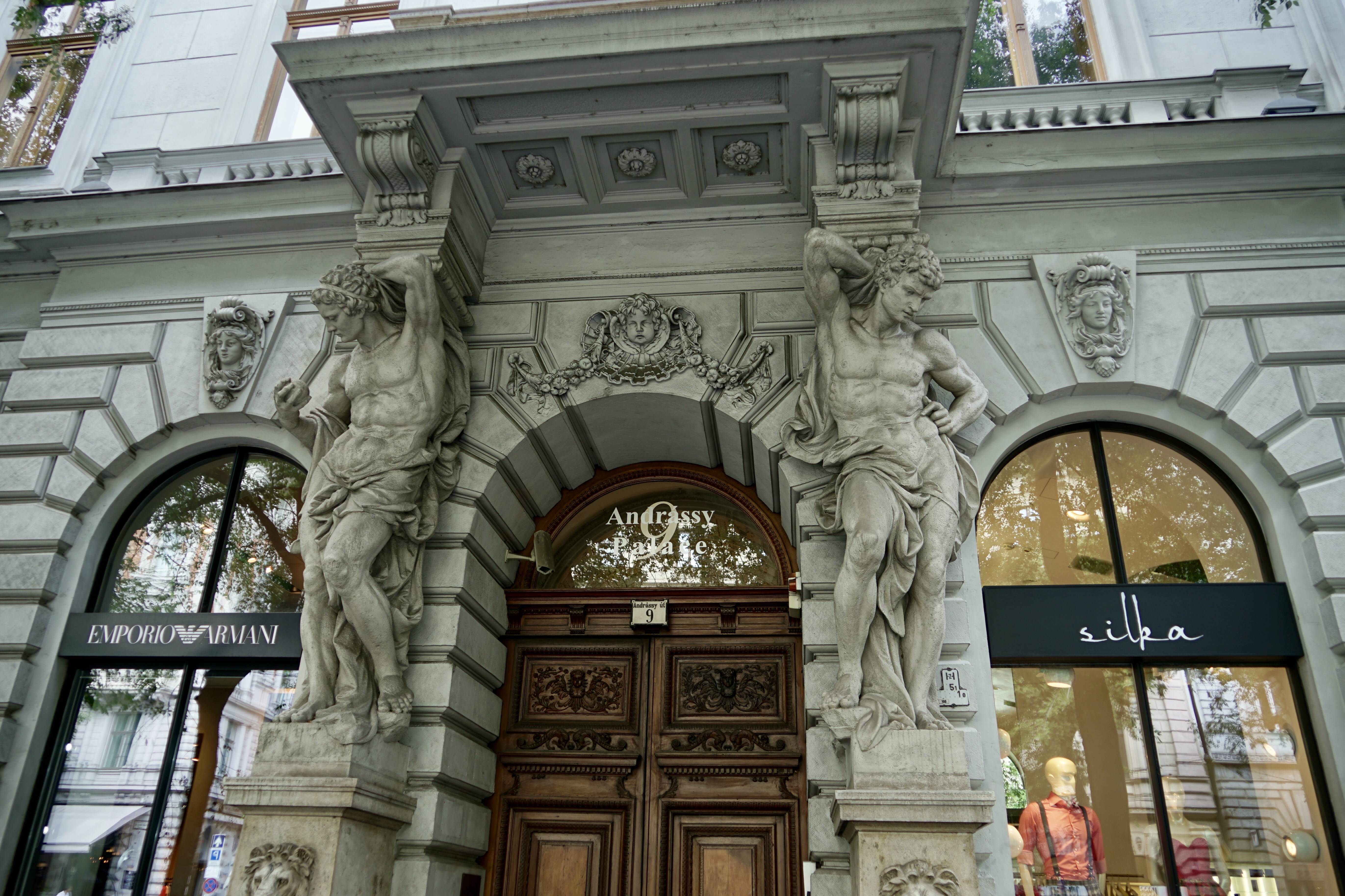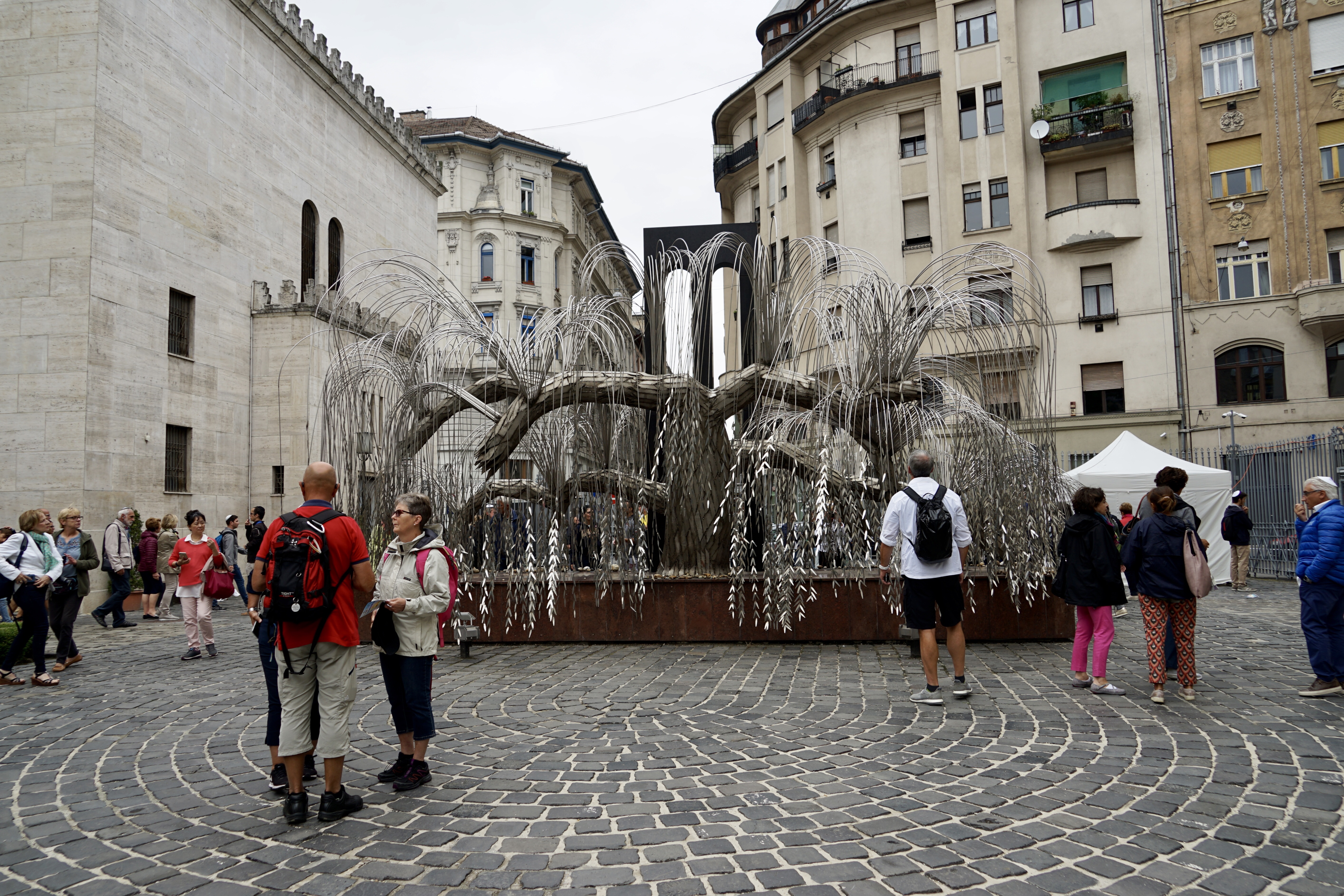Budapest is a city with sweeping and memorable views. The Danube, a river that divides the city into Buda and Pest, is majestic with several iconic buildings lining its banks. Naturally, one must cross the Danube River to get optimal views of buildings on the opposite riverbank. Perspective and lighting are everything. If you have a short stay and don’t plan carefully, you can only hope that the photography gods of sun and light smile on you. After experiencing the very bright light and haze of Budapest in August of last year, I have purchased a polarising (circular) lens filter for my camera. I only wish I had brought one to Budapest.
The Chain Bridge, Gresham Palace, and St. Stephan’s Basilica behind Gresham Palace line up beautifully. The linear alignment of these monuments makes for easy cognitive mapping and therefore excellent urban legibility.


The Hungarian Parliament building is a unique piece of architecture. It is huge, it has a red roof, and is unmistakable in the city environment. In fact, the building is so large that some of its chambers go unused. The Parliament serves as an effective city landmark, helping people find their way when traversing the city.




We booked our tour of Parliament weeks ahead of time, as the English language tour groups fill up quickly. The Parliament interior is shockingly lavish. It would be difficult for me to work in this environment if I were a politician, but it was obviously designed to be awe-inspiring (and it is).


St. Stephan’s Basilica, completed in 1905, is built in neoclassical style. It is dedicated to the first king of Hungary, István or Stephan (1000 – 1038).



We watched the sun go down over the Basilica during a balmy evening while sampling Hungarian wine and cheese at an outdoor table of the DiVino wine bar. It was a bit pricy I thought, but worth it given the very good wine, attentive and friendly staff, and the intoxicating spectacle of diminishing light over St. Stephan’s Basilica.



Ándrassy Út, a grand boulevard, is considered to be the Budapest version of Paris’ Champs-Élysées. If you stroll down it heading away from the river you will eventually get to Hero’s Square. It is a long walk, so we rode part of the way on Line 1 (the oldest) of the Metro, just for the experience.

Ándrassy has some run-down buildings in the process of renovation as funds become available. These will be stunning, once the renovations are completed. As you walk along the boulevard, step into some side streets to explore.





Hero’s Square in City Park is an open area with the exalted Millenium Monument, a structure built to celebrate Hungary’s 1000 years of existence around 1896 (the millenium date is disputed).



The night time Danube River cruise was spectacular. I was saddened to hear about the recent Danube boat accident and deaths.



We stayed near the Jewish District and visited this area right before leaving Budapest.

Budapest Street Scenes



If you enjoyed reading about Pest, then you may also like to read my post about Buda. https://travelandpsychology.travel.blog/2019/06/10/budapests-older-and-hillier-district-buda/
Looks a lovely city, must go there. thanks.
LikeLiked by 1 person
Budapest is fantastic.There is a lot to see and my visit of 5 days was not enough.
LikeLike